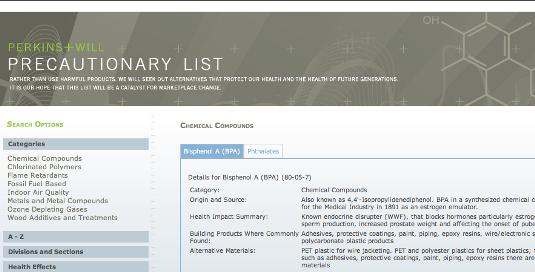
March 24, 2011
Healthy Made Easy
Last Spring I enrolled in a sustainable construction development class thinking it would be nice to know a thing or two about healthy building material alternatives. Despite the section of my bookcase now dedicated to green manuals and alternative materials catalogs, I have learned an important lesson that most building professionals, concerned with health and […]
Last Spring I enrolled in a sustainable construction development class thinking it would be nice to know a thing or two about healthy building material alternatives. Despite the section of my bookcase now dedicated to green manuals and alternative materials catalogs, I have learned an important lesson that most building professionals, concerned with health and sustainability, have learned before me: there is no such thing as “a thing or two.” It’s more like a few thousand things, most of them with crazy scientific names ending with “-ene” or “-ide.” You can spend hours just figuring out what type of paint to invest in (or, should that be wallpaper instead?) to minimize the VOCs used, and that’s even before the dreaded “egg shell white, or linen white?” debate.
Even for design professionals with some experience in building healthy, the challenge can seem like a time consuming labyrinth of dictionary definitions and a frustrating exercise in weighing lesser evils.
For most of us, including those just beginning our professional lives, lessons on sustainability thinking can culminate in a confusing upward climb towards a healthy environment. But, thanks to Perkins + Will’s “Precautionary List”, understanding chemical compositions in the design world has become easier. The list was created by the architecture firm, with the understanding that it is up to every individual to apply the precautionary principle when it comes to the health of humans, other living beings, and the environment. Even if there’s only a chance of a material containing something harmful, why use it?
The interactive list provides five search options to help you understand the chemicals found in building and furnishing materials, from general categories (chemical compounds, wood additives, etc.) to health effects (developmental toxicants, neurotoxicants, etc.) Provided clearly across a user-friendly site, the Precautionary List could be used by even a tech-savvy kid who passed kindergarten with their A-Z search option. A is for Arsenic, which is found in wood additives and treatments. B is for Bisphenol A, a chemical compound, and Bromochlorodifluoromethane, a difficult-to-say ozone depleting gas. See Dick, see Sally. See Dick and Sally find out that their vinyl floors may contain polyvinyl chloride, which can cause cancer or impair child development. Maybe Dick and Sally should check out rubber or linoleum options instead.
Perkins + Will begins their manifesto with the statement: “We believe that it is appropriate to apply the precautionary principal when selecting and specifying products and materials in light of the lasting impact such materials may have on the users of facilities we design.” They acknowledge that this list, which currently describes 25 materials, is “an evolving document that will be updated as new relevant data emerges,” meaning that the list is not only a constantly refreshed with relevant source of information, but that they’re ready to do the work so we don’t have to. A clear, up-to-date online resource free for architects and designers which gets rid of the tedious search through books? No one will be able to use the excuse “the intern couldn’t find the page” again. Cheers to healthy-made-easy.





